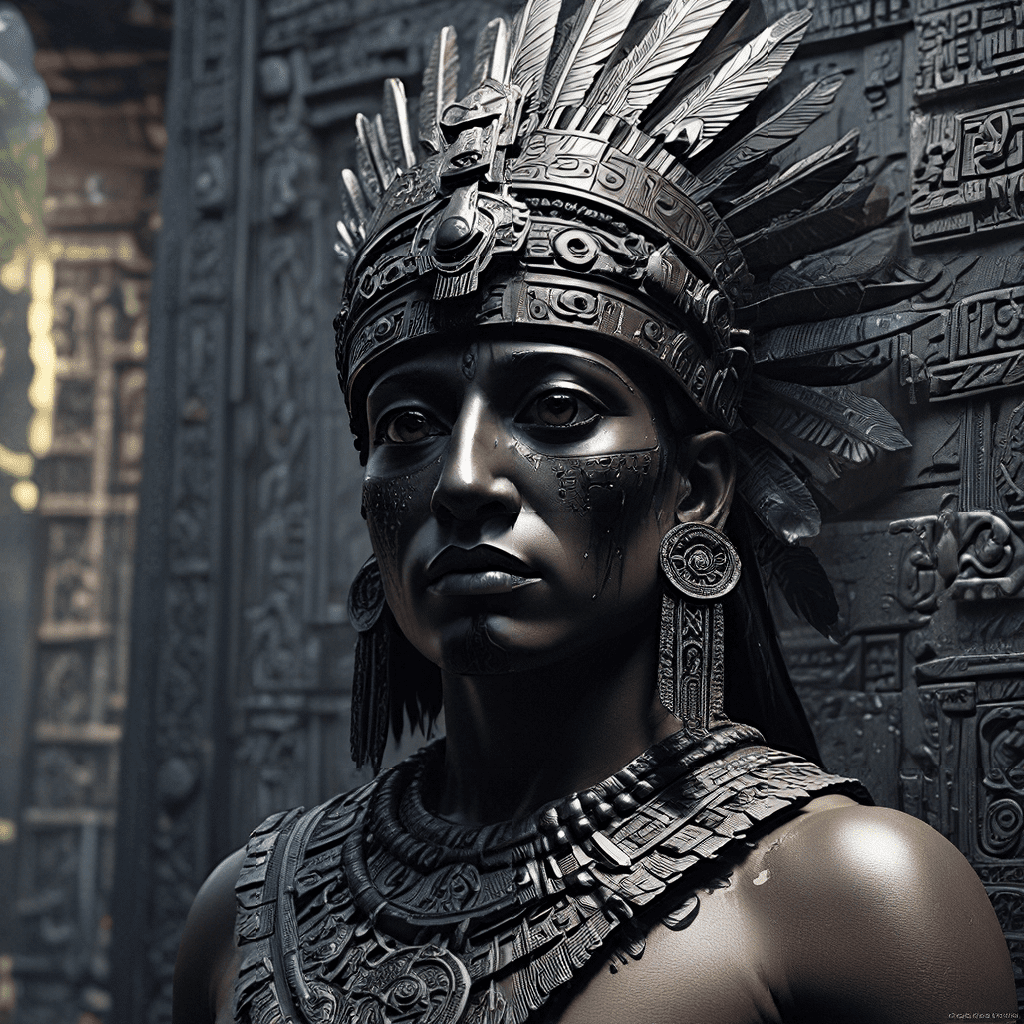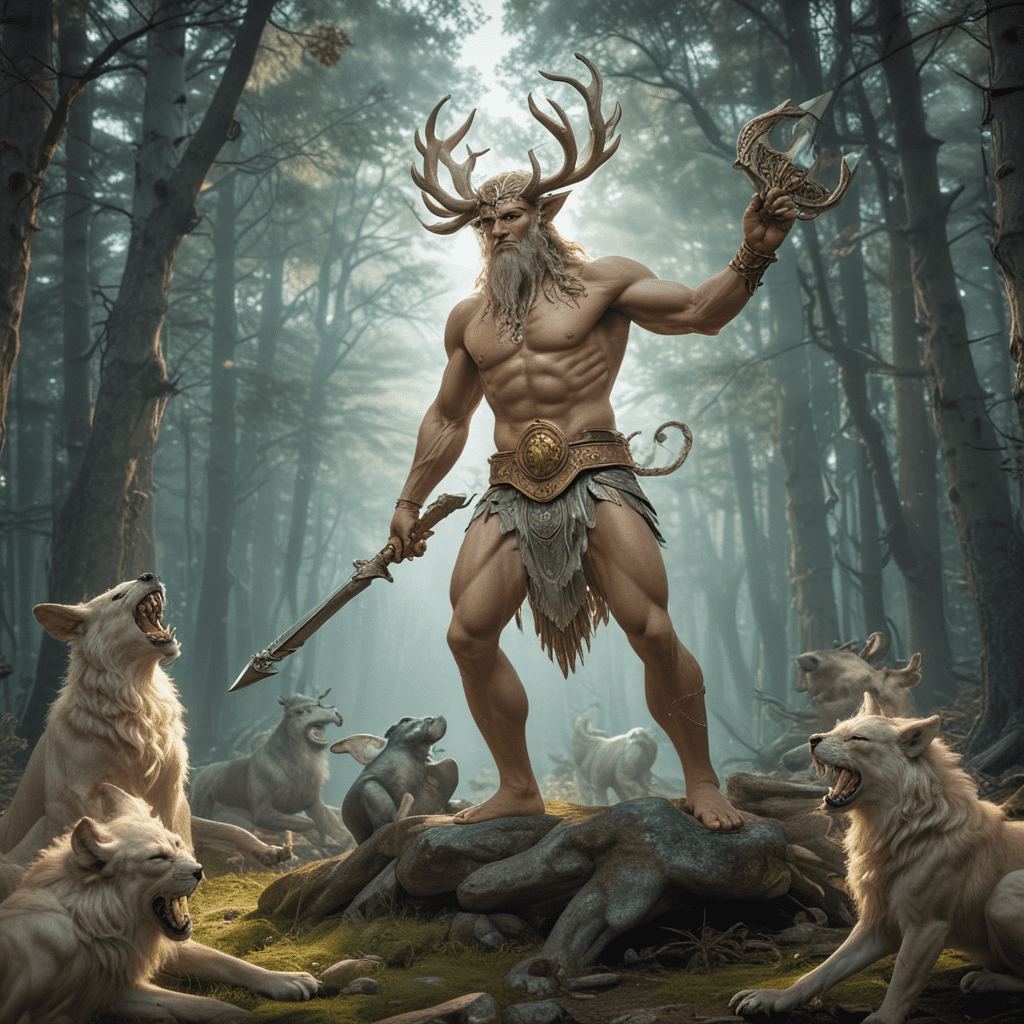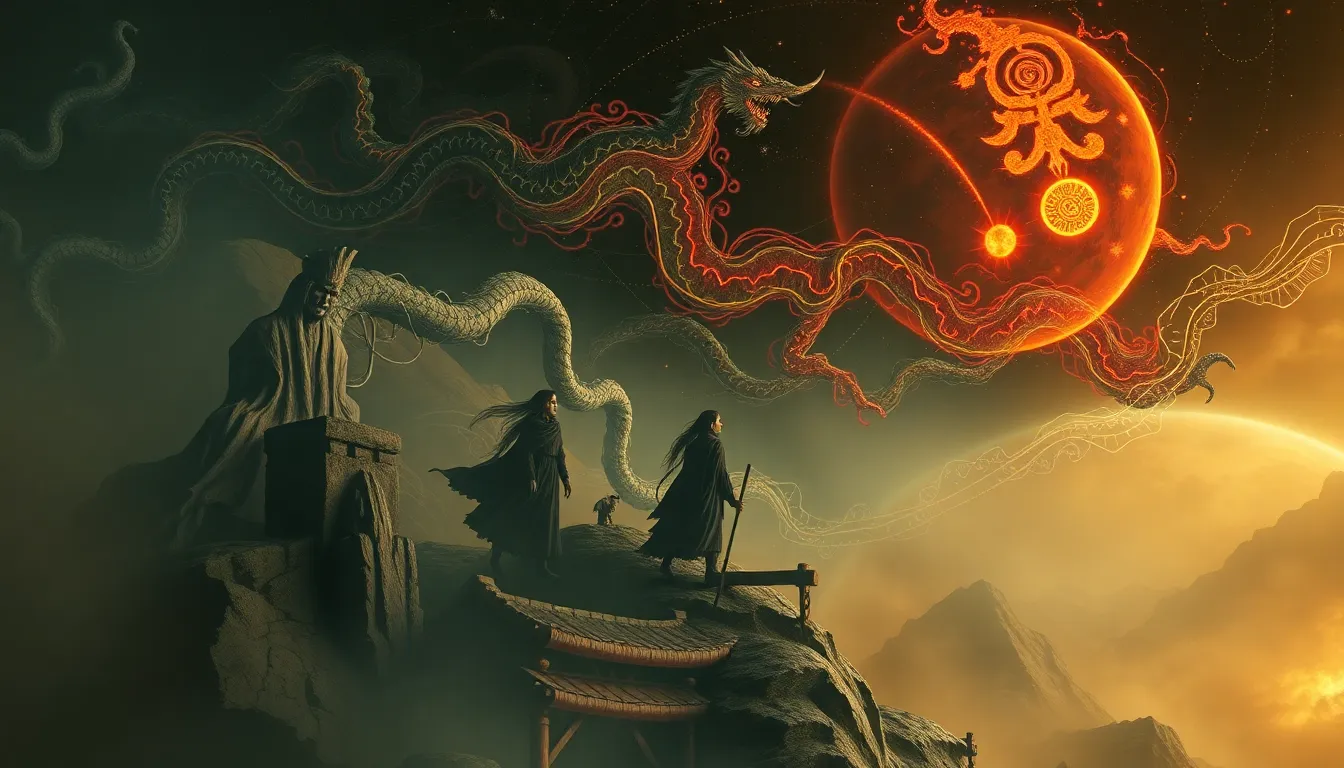Aztec Mythology: The Significance of Obsidian
In the heart of ancient Mexico, the Aztecs, a powerful civilization, held a profound connection with the natural world. Among the many elements they revered, obsidian, a volcanic glass, occupied a special place. Obsidian was more than just a material to the Aztecs; it was a symbol of their deep-seated beliefs, their rituals, and their understanding of the universe. From the shimmering black mirrors to the sharp blades used in sacrifices, obsidian played a pivotal role in shaping their culture and defining their identity.
The Mirror of the Gods: Obsidian in Aztec Cosmology
The Aztecs believed that obsidian was a gift from the gods, a reflection of the divine presence in the world. They saw obsidian's dark, mirror-like surface as a portal to the spiritual realm, a way to connect with the unseen forces that governed their lives. They used obsidian mirrors, meticulously polished to a high sheen, to consult the gods, seeking guidance and interpreting omens. The reflection in the obsidian mirror was not merely an image; it was a window into the divine, a way to glimpse the secrets of the cosmos.
The Black Stone of Sacrifice: Obsidian and the Aztec Rituals
Central to Aztec religious practices were elaborate rituals, often involving offerings and sacrifices. Obsidian played a crucial role in these ceremonies. Its sharp edges were used to create intricate carvings on sacrificial stones, and its dark, reflective surface served as a symbol of death and rebirth. Obsidian blades, known as teponaztli, were used to cut the hearts of sacrificial victims, an act that was believed to appease the gods and ensure the continuation of the world. The act of sacrifice was not seen as an act of cruelty but rather as a necessary act of devotion and a way to maintain cosmic balance.
The Obsidian Blade: Weapon of War and Symbol of Power
Beyond its spiritual significance, obsidian was also a vital material in warfare. The Aztecs crafted deadly weapons, including swords, daggers, and spear points, from obsidian. The obsidian blades were incredibly sharp and could inflict devastating wounds, making them a formidable force on the battlefield. Obsidian weapons were not just tools of war; they were also symbols of power and authority. The Aztec warriors, armed with obsidian weapons, were seen as fearsome and invincible, capable of wielding the power of the gods in battle.
Obsidian and the Aztec Underworld: A Journey to Mictlán
In Aztec mythology, the underworld, known as Mictlán, was a realm of shadows and darkness. The Aztecs believed that after death, the soul embarked on a long and perilous journey to Mictlán, navigating through nine different levels. Obsidian, with its dark, reflective surface, was seen as a symbol of this underworld, a reminder of the fragility of life and the inevitability of death. Obsidian mirrors were used in rituals to connect with the spirits of the deceased, and obsidian blades were used to sever the cords that bound the soul to the physical body.
Obsidian and the Sun Stone: A Cosmic Connection
The Aztecs were fascinated by the celestial bodies, especially the sun. They believed that the sun god Tonatiuh, whose symbol was the sun, was responsible for life and energy on Earth. The Aztecs used obsidian in the creation of the Sun Stone, a massive stone calendar that reflected their deep understanding of astronomy and the passage of time. The Sun Stone, with its intricate carvings and obsidian accents, represented the cosmic cycle and the eternal dance of the sun and moon. The Aztecs believed that obsidian, mirroring the black sun in the night sky, held a deep connection to the sun, reflecting its power and importance in their lives.
The Sacred Artifact: Obsidian in Aztec Art and Crafts
Beyond its religious and practical uses, obsidian was also a prized material for Aztec artisans. They crafted intricate sculptures, jewelry, and masks from obsidian, showcasing their skills in stone carving. These obsidian artifacts, with their polished surfaces and intricate details, were not just objects of beauty; they were also imbued with spiritual significance. The Aztecs believed that the objects made from obsidian held the power of the gods, and wearing them or displaying them in their homes brought good luck and protection. The creation of these obsidian artifacts also reflected the Aztec's belief in the connection between the mundane world and the spiritual realm.
Obsidian as a Gift from the Gods: Legends and Tales
Many Aztec legends and tales revolved around obsidian. One popular legend tells the story of how obsidian was created when the god Tezcatlipoca, known as the "Smoking Mirror," sacrificed himself to create the world. His blood flowed onto the earth, solidifying into obsidian, a symbol of his power and sacrifice. Another legend speaks of the obsidian mirrors used by the gods to gaze into the future. These tales served to reinforce the belief that obsidian was a sacred material, a gift from the gods that held immense power and spiritual significance.
Theories on the Significance of Obsidian: A Material Symbol of the Divine
The Aztec's deep connection to obsidian was not just a coincidence. The unique properties of obsidian, its dark, glassy surface, and its sharpness, made it a powerful symbol for their beliefs. For them, obsidian reflected the darkness of the underworld, the power of the gods, and the fragility of life. It was a material that connected them to the spiritual realm, reminded them of their duty to the gods, and symbolized their understanding of the universe.
Obsidian and the Aztec Identity: A Reflection of their Beliefs
Obsidian was more than just a material to the Aztecs; it was a core element of their worldview, their religious practices, their art, and their identity. It was a powerful symbol of their connection to the divine, their understanding of the cosmic forces, and their deep reverence for the natural world. Through their use of obsidian in various aspects of their lives, the Aztecs expressed their beliefs, their values, and their cultural identity. The legacy of obsidian continues to fascinate and intrigue us, offering a glimpse into the rich and complex world of Aztec mythology and culture.
FAQ
Q: What was obsidian used for in Aztec society?
A: Obsidian was used for a variety of purposes in Aztec society, including religious rituals, warfare, and art. It was believed to be a gift from the gods and was used to make mirrors, blades, sculptures, jewelry, and masks.
Q: How did the Aztecs believe obsidian was created?
A: According to Aztec legend, obsidian was created when the god Tezcatlipoca sacrificed himself to bring about the creation of the universe. His blood flowed onto the earth, solidifying into obsidian.
Q: What was the significance of obsidian in Aztec rituals?
A: Obsidian played a crucial role in Aztec rituals, especially those involving sacrifice. Obsidian blades were used to cut the hearts of sacrificial victims, and obsidian mirrors were used to connect with the spirits of the deceased.
Q: Where did the Aztecs get obsidian?
A: The Aztecs obtained obsidian from volcanic regions in Mexico, including the highlands around present-day Mexico City.




